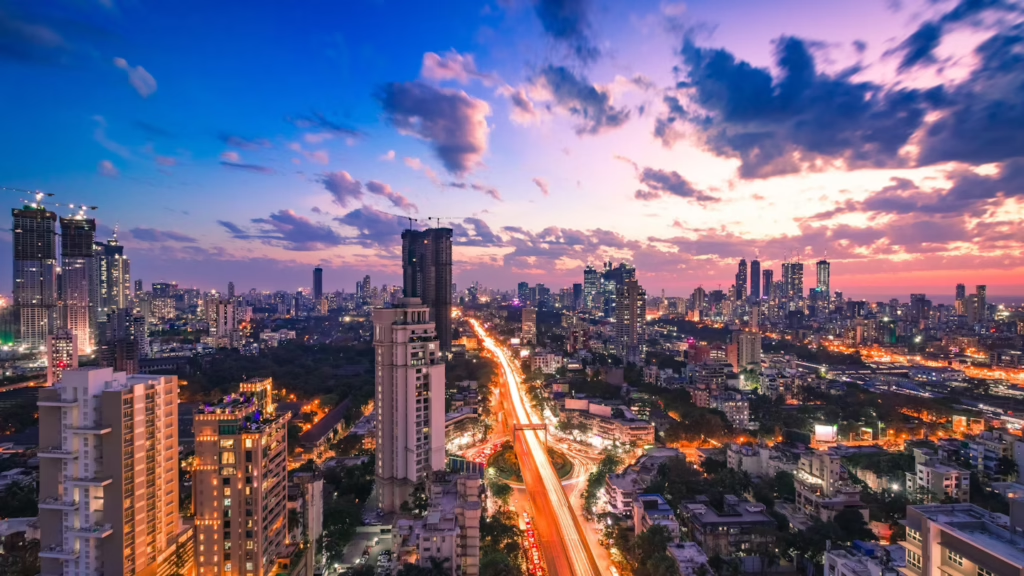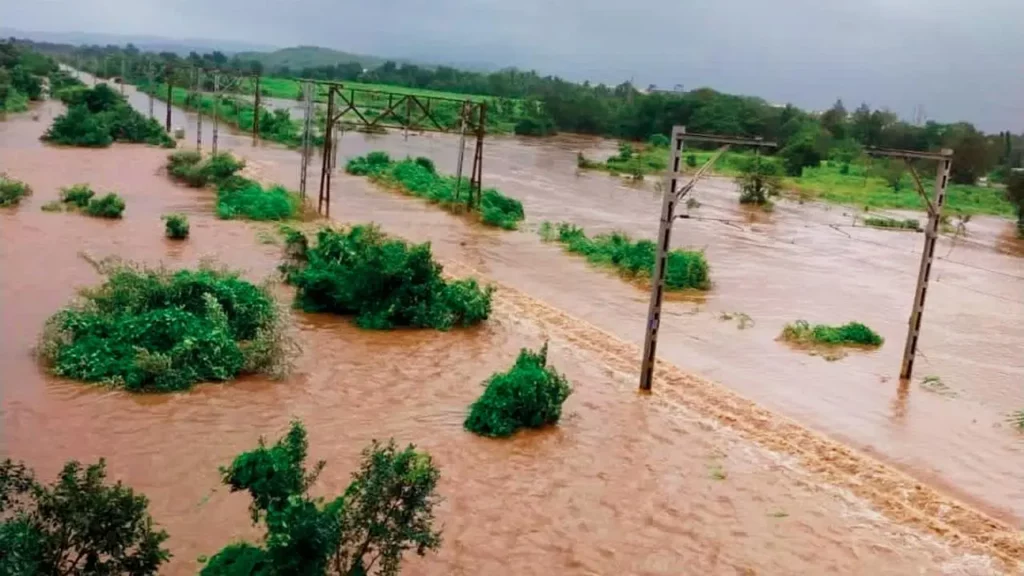Maharashtra’s Climate Action Challenges and Solutions
Abhijit Ghorpade, from the Government of Maharashtra, discusses balancing climate change with economic growth via Maharashtra’s State Action Plan for Climate Change (SAPCC)
What key challenges does the state of Maharashtra address with the State Action Plan for Climate Change (SAPCC)?
Climate change is the greatest challenge faced by mankind in the 21st century. India is a signatory to all major international conventions on climate change, including the 2015 Paris Agreement. At COP 26 in Glasgow in November 2021, our Honorable Prime Minister Narendra Modi announced the goal of ‘net zero’ by 2070. To honor its international commitments, the Indian government prepared the National Action Plan on Climate Change. In response, Maharashtra State prepared its State Adaptation Action Plan on Climate Change, which has been revised given the common framework and guidelines issued by the Ministry of Environment, Forest, and Climate Change.
Maharashtra’s newly drafted SAPCC aims to build the state’s resilience in the face of rising temperatures, heatwaves, irregular precipitation, sea level rise, droughts, floods, and cyclones. It analyzes past climate trends and makes projections based on scientific modelling for the future as well as conducts vulnerability assessments of different climatic threats at district and sub-district levels to build preparedness for disasters. Our findings show that the frequency and intensity of extreme climatic events are rising. The number of hot days has doubled over the past 50 years. In the last decade, the frequency of droughts has doubled, cyclones tripled, and floods quadrupled. A swapping trend has been observed in a few districts, which means the same districts are now vulnerable to both droughts and floods.
Maharashtra is one of the most industrialized states in India, contributing the highest national GDP. It is the largest sub-national economy of the country, aspiring to be a trillion-dollar economy soon. However, the state also contributes a 10th of the country’s greenhouse gas emissions.
How to reconcile the state’s economic aspirations with the country’s climate commitments is the biggest challenge before us.
It is possible only if we charter a sustainable path of development.
As suggested by the Intergovernmental Panel on Climate Change, the next few years are critical for mitigation. The previous plan was focused on adaptation, whereas the revised SAPCC balances the two. It delineates adaptation strategies pertaining to agriculture, water, public health, tourism, and tribal development and mitigation strategies for energy, transport, industries, and forestry.
Though Maharashtra is highly urbanized, the livelihood of about 50% of its people still depends on agriculture. Agriculture is extremely sensitive to climate change. To protect our farmers and ensure food security, the SAPCC recommends a range of climate-resilient agricultural practices like crop rotation, soil health cards, drip irrigation, and drought-resistant varieties of crops. An innovative initiative introduced in the SAPCC is about propagating Decentralized Renewable Energy-based technologies for farmers that would not only support the clean energy transition but also strengthen rural livelihoods and productivity.

It is estimated that 30% of fruits and vegetables are lost for want of cold storage facilities. Therefore, the plan recommends building a chain of cold storage facilities in rural areas. Maharashtra is also the third most urbanized state in the country. Globally, cities are at the center of climate change. They are also vulnerable to the heat island effect. Most of the emissions in cities come from buildings. SAPCC therefore incorporates a State Cooling Action Plan which consists of space cooling, on the lines of the 2019 India Cooling Action Plan.
Successful implementation of the climate action plan would depend upon the state’s capacity to mobilize climate finance. The plan introduces a chapter on climate finance and identifies its sources. In 2023–24, 11.95% of the annual financial outlay was earmarked for climate-related actions. We are committed to increasing the same year by year and will eventually release a climate budget for the state. We also want this massive energy transition to be just, fair, and inclusive. Therefore, the plan emphasizes gender mainstreaming and youth engagement across the sectors.
In 2021, Mumbai was the first city in India to release a climate budget of its own. How will this be rolled out?
In 2021, Mumbai was the first city in the country to release its City Climate Action Plan and to announce its climate budget. This represents a significant step toward integrating climate action into municipal governance.
In its first-ever climate budget, an inclusive approach has been adopted by incorporating all climate-related activities into the report. I am happy to note that the climate budget accounts for 32% of Mumbai’s total budget. Earmarking a separate climate budget will allow it to track and measure the progress of climate actions more effectively while ensuring that these remain dynamic and responsive to emerging challenges.
Brihanmumbai Municipal Corporation (BMC), the local self-governing body of Mumbai, is also the first to set up a dedicated Environment and Climate Change Department, which would facilitate the implementation of the climate budget. A monitoring template has been prepared by the department to take quarterly updates on the progress of each activity mentioned in the climate budget. Just as climate has been integrated into Mumbai’s financial budgeting process, we are now trying to integrate it into the financial reporting process.

There is no definitive framework using quantitative methods to model adaptation and resilience actions. Therefore, BMC has undertaken a basic mapping of Sustainable Development Goals (SDGs) co-benefits in this version of the report. Climate finance is an evolving concept. The scope of climate budgets will further expand in the years to come. Methodologies for impact assessment would be further refined. We want Mumbai to emerge as a leader in urban climate action.
What are the primary challenges faced when implementing Maharashtra’s Climate Action Strategy?
We are currently preparing to implement strategies for the key sectors included in the SAPCC. The recommendations in the climate action plan will be converted into actionables based on departmental priorities and budget.
Institutional coordination is one of the biggest hurdles that we face. Climate action warrants multilateral consultation, integrated approach, and collaborative work amongst different stakeholders.
The State Climate Action Cell (SCAC) was instituted to act as a nodal agency that ensures cohesive climate action in the state.
The SCAC coordinates with the Union Government, various departments of the state government, local self-governments, think tanks, civil society organizations, and research organizations and orchestrates climate action towards a common goal.
The SCAC has taken proactive steps to mainstream the climate agenda across all departments by designating their nodal officers as climate officers. Recently, the government established climate action cells at the city, district, and divisional levels to facilitate the formulation and implementation of the City and District Climate Action Plans. The cells will also review the implementation of the SAPCC within their respective jurisdictions. City Climate Action Cells will be headed by municipal commissioners, whereas District Climate Action Cells will be headed by district collectors. The Division level Climate Action Cells have also been formed under divisional commissioners for oversight.

Capacity building is another key challenge for effective implementation of climate action strategies. Essentially, the success of our policies and programs depends on the capacity of the institutions implementing them. Implementation of the SAPCC will be done at two levels, the concerned government departments and the District and City Climate Action Cells. This calls for continuous training of officials in climate science, planning, project management, and climate finance. Given the dynamic nature of climate change and its rapidly evolving policy landscape, constant learning, updating knowledge, and honing the skills and capacities of our officials are key to effectively handling climate emergencies.
Another major challenge is how resources are allocated. Despite allocating 11.95% of its budget towards climate action last year, Maharashtra still grapples with mobilizing enough funds for climate mitigation and adaptation initiatives. There is a need to increase our investment base incrementally by attracting more private sector investments and tapping into national and international funding agencies, even while recognizing the need to significantly expand public spending to support climate initiatives. Moreover, there is an urgent need to balance the allocation of funds between mitigation and adaptation strategies.
While mitigation is vital for long-term sustainability, adaptation is crucial and immediate to build resilience against climate impacts.
Could you share critical learnings from Maharashtra’s journey of tackling climate change that could be useful for other states?
Maharashtra is the second most populous state in the country with the third largest land area. With its varied geography and socio-cultural diversity, there cannot be a ‘one-size-fits-all’ climate solution for the state. Therefore, one must follow a decentralized, multi-pronged approach. What this practically means is that we create local institutional infrastructure for climate governance and involve local governments and communities in climate action. This makes climate action people-centric, factoring in their needs and vulnerabilities. People will also develop a sense of ownership. This way, climate action would become contextual in intervention, effective in its application, and sustainable in the long run.
One must adopt a multi-stakeholder approach in the design, implementation, and sustainability of climate action. Climate change is a multi-faceted issue that requires coordinated efforts across all sections of society. In Maharashtra, cooperation with government agencies, private sectors, academia, civil society, and international organizations has been fostered, leading to the integration of talents and resources in the development and implementation of comprehensive strategies. This would make climate action inclusive and create a shared sense of responsibility amongst the stakeholders.

Grassroots organizations have always been instrumental in driving change and creating impact on the ground, translating policies into real action. By integrating their knowledge and impactful endeavors into our broader climate strategy, we attain greater reach and impact. For instance, grassroots organizations have been instrumental in promoting climate-resilient agricultural practices in many drought-affected regions of Maharashtra while others have facilitated community-level action towards water conservation. Their involvement ensures that climate action is not just top-down but also bottom-up, which is essential for sustainable impact.
The Mazi Vasundhara Abhiyan (My Earth Mission) is a flagship program of the state that incentivizes local climate action through people’s participation. It believes climate change is the result of the imbalance of the five elements of nature. To restore this lost balance, a competition is floated amongst the local self-governing bodies based on the themes related to the five elements of nature. Due to the incentives the competition creates, I am happy to mention that at the end of the fourth cycle, over 22,000 village Panchayats (councils), municipal councils, and corporations have registered in the competition.
One of the most profound learnings is the necessity for an integrated approach to climate action. In Maharashtra, we’ve come to understand that climate issues are deeply intertwined with broader socio-economic and environmental challenges. Often these issues are addressed in isolation which leads to duplication of efforts, sometimes yielding little impact on the ground, despite elaborative efforts. Therefore, adopting an integrated approach that binds all aspects of sustainable development, as defined by our commitment to the broad spectrum of SDGs is one of the key takeaways from our climate action journey.
